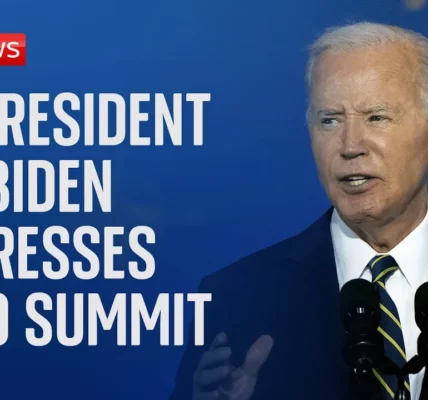Contrasting Consumer Sentiment: Tesco vs Sainsbury’s

The retail landscape in the UK is undergoing significant changes as consumer sentiment shifts in response to economic pressures. This article explores how Tesco and Sainsbury’s, two of the leading supermarkets, are navigating these changes as they prepare for the critical Christmas shopping season.
Introduction
The retail sector has always been a bellwether for consumer sentiment, and recent insights from Tesco and Sainsbury’s reveal a stark contrast in their outlooks. While Tesco’s CEO Ken Murphy reports a positive consumer sentiment, Sainsbury’s CEO Simon Roberts expresses a more cautious view. This divergence may stem from their differing business models and product offerings. In this article, we will delve into the factors influencing these sentiments and what they imply for consumers and retailers alike.
The Landscape of Consumer Sentiment
Consumer sentiment is critical in determining retail performance, especially during peak shopping periods like Christmas. Recent trends indicate a shift towards more premium products, as customers are willing to indulge in affordable luxuries despite the ongoing cost of living crisis. This phenomenon, often referred to as the “lipstick effect,” suggests that shoppers are prioritizing experiences and treats during challenging times.
Tesco’s Positive Outlook
Ken Murphy, Tesco’s CEO, highlighted that sales of premium items surged by 18%, indicating a growing willingness among customers to spend on higher-quality goods. This marks a significant departure from previous years when budget ranges dominated sales due to economic constraints. Tesco’s focus on food retail as its core offering, coupled with successful pricing strategies, allows it to capture both budget-conscious and premium customers effectively.
Sainsbury’s Cautious Approach
In contrast, Simon Roberts of Sainsbury’s expressed concerns about consumer spending, particularly due to the challenges posed by their Argos division, which targets discretionary spending. With a mix of general merchandise and food offerings, Sainsbury’s faces a unique challenge in navigating shifting consumer priorities.
Impact of Economic Factors on Retail
Several external factors are shaping consumer behavior and retail strategies in the UK.
Interest Rates and Inflation
Recent discussions around interest rates suggest a potential decrease as inflation appears to be easing. Tesco has begun passing price cuts on to nearly 3,000 products, which could lead to lower food bills across the sector. Nevertheless, it is essential to note that easing inflation does not necessarily equate to lower prices; rather, it indicates a slower rate of increase in costs.
Consumer Spending Habits
Consumer confidence is a double-edged sword; while some are willing to spend more on premium products, others remain cautious. Recent surveys indicate that while people are not overly exuberant, there is a sense of optimism as the festive season approaches. Retailers must adapt to these sentiments to optimize their sales strategies.
- Increase in premium product sales at Tesco.
- Stagnation in sales growth for Sainsbury’s due to Argos.
- Potential for lower prices across supermarkets as competition heats up.
Looking Ahead: The Christmas Season
The Christmas season represents a critical period for retailers, and understanding consumer sentiment is key to capitalizing on this time. Tesco’s positive outlook suggests they are well-positioned to benefit from increased consumer spending during the holidays. In contrast, Sainsbury’s may need to reevaluate its strategy to attract customers looking for festive bargains.
Strategies for Success
To navigate the upcoming festive season successfully, both retailers must consider the following strategies:
- Diversify Product Offerings: Expanding premium ranges while maintaining budget options to cater to all consumer segments.
- Enhance Customer Experience: Focusing on customer service and in-store experiences to drive foot traffic.
- Marketing Campaigns: Implementing targeted marketing efforts that highlight seasonal promotions and unique product offerings.
Conclusion
In summary, the contrasting consumer sentiments between Tesco and Sainsbury’s highlight the complexities of the retail landscape in the UK. While Tesco capitalizes on a shift towards premium products, Sainsbury’s must address the challenges posed by its diverse offerings. As the Christmas season approaches, understanding and adapting to consumer behavior will be essential for both retailers. With the potential for lower prices and increased consumer spending, the festive period could be a pivotal moment for the retail sector. For more insights and updates on retail trends, stay tuned to our website.
“`




